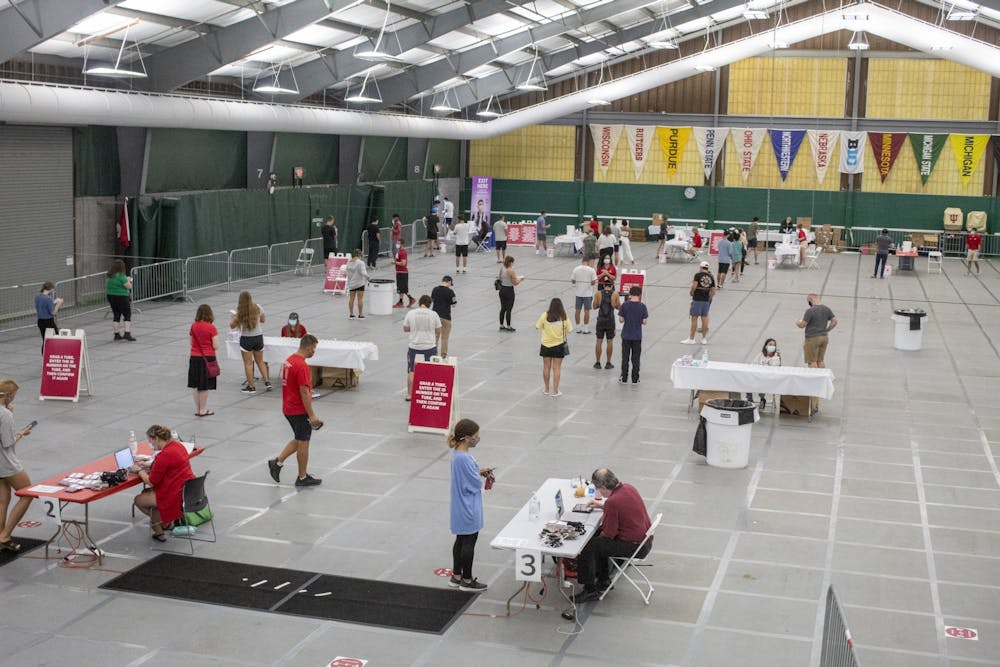As an off-campus student, I went to the IU Tennis Center for my on-arrival COVID-19 test Saturday to experience the profound discomfort of standing in a giant room full of fellow students spitting in tubes while cheerful staff gave instructions and judged the quality of our saliva.
I had no problem filling my tube, probably because I was hungry, having woken up late and skipped breakfast and coffee to get to my appointment on time. It wasn’t as easy for some — the room was full of students awkwardly turned toward walls and avoiding eye contact, trying to encourage their bodies to create enough spittle to fill their tubes to the black line. You need clear liquid only, the bubbles don’t count. My department group chat confirmed thisstruggle, with stories of people desperately trying to spit for more than five minutes.
While I was waiting outside the building trying to get my phone to work with the testing website, I overheard a staff member tell another she was leaving to change and shower because someone’s spit tube had spilled all over her. A warning to all: Even if you have enough saliva to fill one tube, be prepared to fill a second. IU is conducting random mitigation testing using the saliva test, so if you’re selected and dry, this column is for you.
You’re not supposed to drink or eat for 30 minutes before your test, but there are things you can do to promote saliva production generally. Harvard Health recommends eating crunchy, fibrous foods such as apples, carrots and celery, chewing sugar-free gum, limiting consumption of alcohol and caffeine and, of course, drinking water. A simple kale, apple and carrot salad could be the perfect pre-test lunch.
On the other hand, if crunchy root vegetables aren’t your thing, you can also try a less chewing-labor-intensive route – just look at food. A study published in the peer-reviewed science and medicine journal PLOS One found exposure to attractive and sour foods and simulating eating foods increased salivation in experiment participants. The authors also noted a lot of research supports links between sensory cues and salivation, and certain circumstances induce more salivation, including hunger and imagining favorite foods.
If your imagination needs some stimulation, Instagram has some amazingly diverse food accounts. A few I’d recommend to get your juices flowing are @fatimas_grill, a California halal grill that makes some completely insane food items, such as Flamin' Hot Cheetos burritos and shawarma Crunchwrap Supremes and @spoonsofdilli, an account that highlights the street food of Delhi, including a lot of wild cheesy, saucy sandwiches that I never knew I craved. For those who only salivate for dessert, London baker @bakedbybenji’s feed is full beautiful photos of sweets ranging from almond cake with white chocolate and tahini ganache to classic ice cream sandwiches.
In short, when you get that random testing email, get your carrot sticks ready, drink some water and start dreaming about whatever delicious meal you’ll eat as soon as you’re done drooling into your tube.




